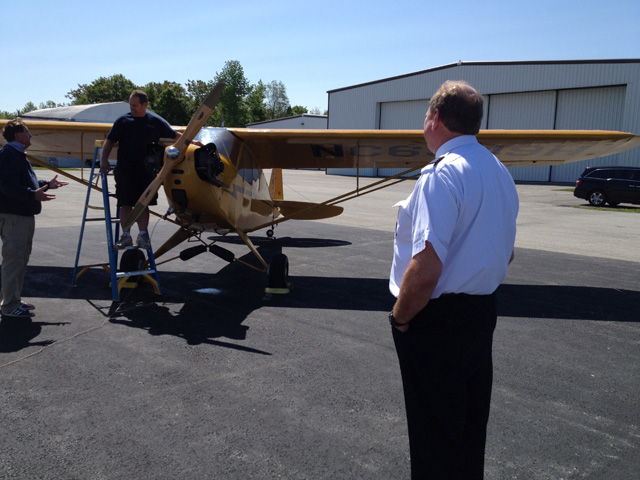Background
The Adventure Begins Here
Ever since Wilbur Wright’s 59-second flight on December 17, 1903, aviators have been setting records for speed, altitude, distance and endurance. Consequently, after more than a century of flying further, faster and higher, many of the world’s records have already been claimed by spirited aviators with names like Lindbergh, Earhart, Doolittle and Yeager.
So when you hear about Joe Murray and Ron Siwik’s attempt to fly from Kent State University’s Andrew W. Paton Airport in Northeast Ohio to Dayton’s Wright Brothers Airport near Ohio’s southern border—you probably wouldn’t consider the flight to be one for the record books. But if the two friends and pilots complete the flight in the spring as planned—you may need to reconsider. It may well be a world record for the first, longest, slowest and most peculiar flight to Wright Brothers Airport ever made in an antique airplane.
A Strange Way to Get to Dayton
As the crow flies, the distance between the two airports is only 159 miles. If you hop in the family car in Kent and follow Interstate Highway 71 south to Dayton, the commute would take a little over three-and-a-half hours—hardly something to call home about.
Murray and Siwik’s flight is unique however, because they are not planning to take a direct route to Wright Brothers Airport. Instead, they intend to fly consecutively from Kent to Dayton via all of Ohio’s 88 counties—a distance of 1,670 miles—and no one has ever done it. To which Murray quickly adds with a grin, “and there is probably a good reason for that.”
A Special Flight
Murray, a professor at Kent State University, came up with the idea for the flight as part of a book and documentary project with his students. Siwik, a flight instructor and former military flight surgeon during the Vietnam war, is no stranger to unusual flights—having flown a small airplane solo around the world in 2008. Murray’s students hope to create a scholarship to make it possible for families to send a child to college for the first time.
The pilots plan to take-off from Kent on Sunday, May 13, 2012 flying two bright yellow 1946 Piper J3 Cubs. The airplanes were built almost two decades before Murray was born. With any luck, he says, “they’ll land in Dayton a week or two later.” The flight will consist of 88 take-offs and landings, and more than 26 hours aloft in the 66-year old airplanes that were originally designed for military observation flights and pilot training service during World War II.
Coincidentally, 2012 marks the 75th anniversary of the venerable Piper Cub—and Murray thinks the flight is a great way to recognize both Ohio’s legacy as the “Birthplace of Aviation” and honor the airplane that by summer 1944, taught 435,165 pilots to fly in the U.S. Civilian Pilot Training Program. (One of those pilots is Cambridge, Ohio native, astronaut and senator, John Glenn.)
A Strong Sense of the Possible
Murray says the biggest challenge on the flight will be weather. As a native Ohioan, he grumbles fondly at every opportunity about his home state’s climate. He says that it is rare, “to get more than a few sunny, flyable days in a row here without having to pay for it with weeks of foul weather, low ceilings and poor visibility.” He remarks that his pilot colleagues in Florida have a favorite saying, ”If you don’t like the weather in Florida, wait a minute.” To which Murray responds, “In Ohio, if you don’t like the weather—get used to it.”
In the early days of flight, a pilot often needed considerable determination to fly. More than a century later, Joe Murray and Ron Siwik share this spirit. They both have an extraordinary enthusiasm for flying. Murray says that it provides him with a “strong sense of the possible.” In a time when there aren’t many records left unclaimed in aviation, the two pilots hope this spring to create a new—albeit unusual one of their own. Reminding us that most pursuits in life are accomplished, first and foremost, in the imagination—the place where all great adventures begin.
